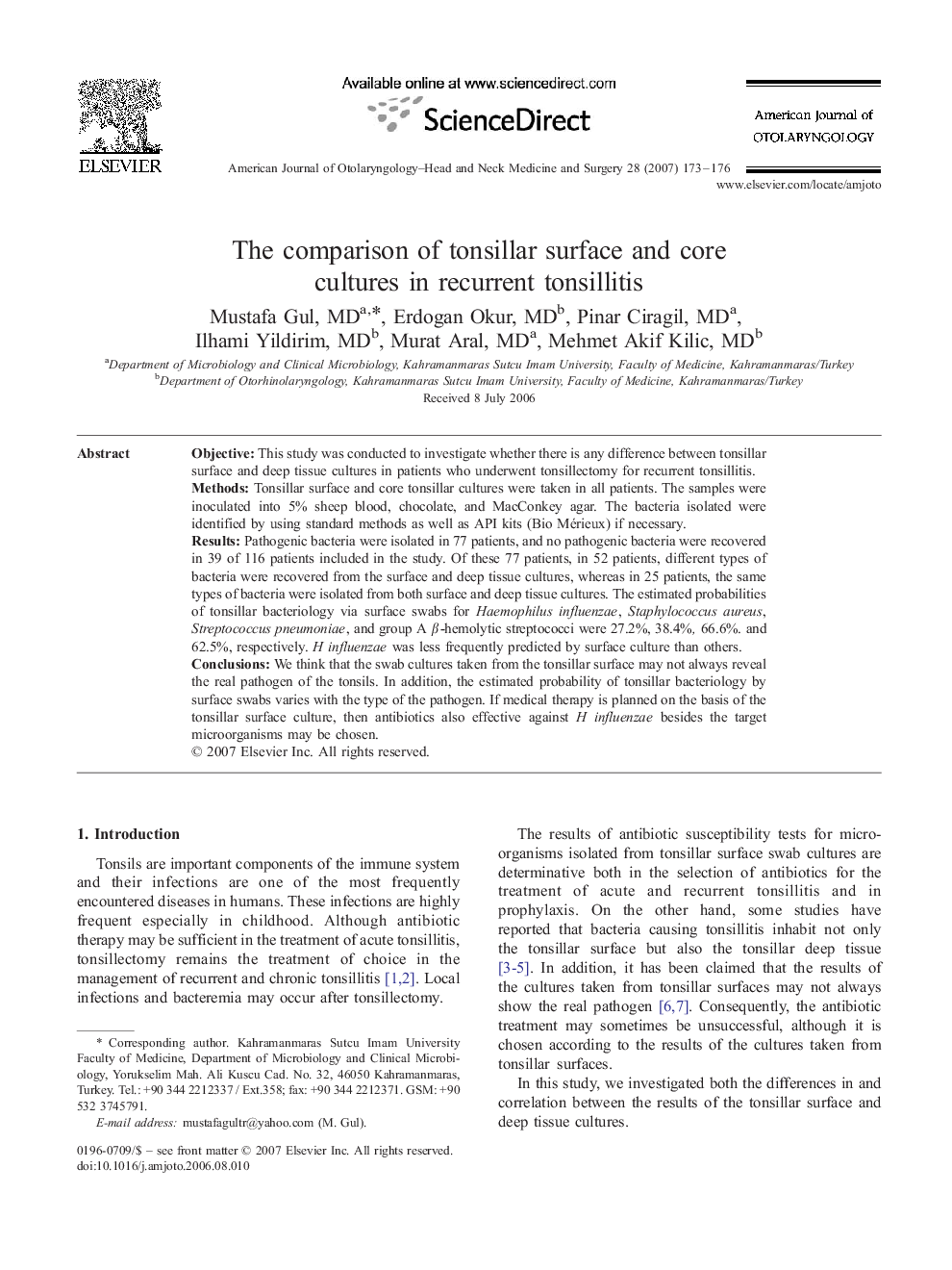| Article ID | Journal | Published Year | Pages | File Type |
|---|---|---|---|---|
| 4104565 | American Journal of Otolaryngology | 2007 | 4 Pages |
ObjectiveThis study was conducted to investigate whether there is any difference between tonsillar surface and deep tissue cultures in patients who underwent tonsillectomy for recurrent tonsillitis.MethodsTonsillar surface and core tonsillar cultures were taken in all patients. The samples were inoculated into 5% sheep blood, chocolate, and MacConkey agar. The bacteria isolated were identified by using standard methods as well as API kits (Bio Mérieux) if necessary.ResultsPathogenic bacteria were isolated in 77 patients, and no pathogenic bacteria were recovered in 39 of 116 patients included in the study. Of these 77 patients, in 52 patients, different types of bacteria were recovered from the surface and deep tissue cultures, whereas in 25 patients, the same types of bacteria were isolated from both surface and deep tissue cultures. The estimated probabilities of tonsillar bacteriology via surface swabs for Haemophilus influenzae, Staphylococcus aureus, Streptococcus pneumoniae, and group A β-hemolytic streptococci were 27.2%, 38.4%, 66.6%. and 62.5%, respectively. H influenzae was less frequently predicted by surface culture than others.ConclusionsWe think that the swab cultures taken from the tonsillar surface may not always reveal the real pathogen of the tonsils. In addition, the estimated probability of tonsillar bacteriology by surface swabs varies with the type of the pathogen. If medical therapy is planned on the basis of the tonsillar surface culture, then antibiotics also effective against H influenzae besides the target microorganisms may be chosen.
